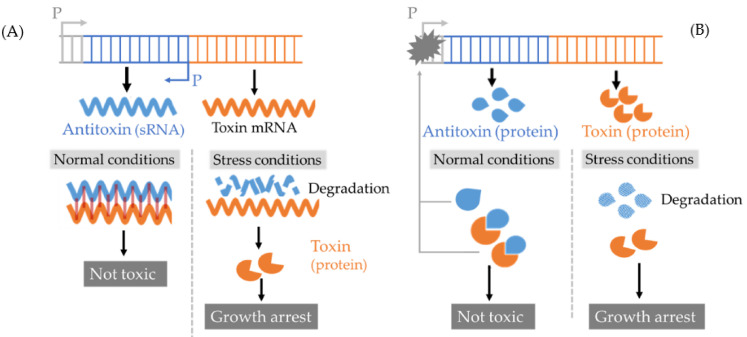Figure 4.
Models of Toxin-antitoxin (TA) systems associated with persister formation. (A) Type I TA system: it contains a small RNA (sRNA) antitoxin and a protein toxin. In normal conditions, antitoxin inhibits the translation of toxin mRNA. In a stress condition, the antitoxin is degraded, freeing the toxin mRNA to be translated. The type I toxin causes bacterial membrane depolarization. (B) Type II TA system: it contains a DNA-binding protein antitoxin and a protein toxin. In normal conditions, the antitoxin binds to the toxin and inhibits its activity. The antitoxin, as well as most of type II TA, the complex can target on the promoter and repress the transcription of the toxin gene. In stress conditions, the antitoxin is degraded by Lon or Clp proteases, releasing the toxin to inhibit several essential metabolic processes like DNA or protein synthesis. P: promoter.

